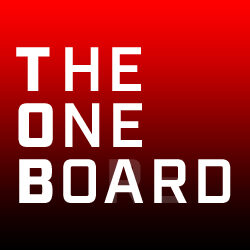This installment of The One Board originally appeared in Bowlers Journal International, August, 2021
All sports deal with unbearable clichés. In bowling’s exclusive vernacular, there are several overt clichés led by trusting the process and taking it one shot at a time, but some of the best clichés are those that go unnoticed for a while. These phrases are like the chrysalis stage of a butterfly: a common expression in a cocoon isn’t quite yet a cliché. For one such expression, the cocoon stage is over as we’re finally calling attention to it: “It’ll be interesting to see.”
Listen for it. It’s everywhere.
It’ll be interesting to see how quickly we can get this saying to emerge as a cliché, then continue using it anyway.
These types of proclamations are generally spoken by bowlers, commentators, writers, fans and tournament staff prior to any round of bowling, whether it be qualifying, match play or the live-streamed or televised finals. We’re given a series of things that will be interesting to see—which are always the same, by the way—but then we actually start seeing what we’re told will be interesting with the accompaniment of dead silence. Is it not interesting after all? Or is it so enthralling that the commentators and spectators sit in stunned reticence, amazed at the early breakdown during frame one of game one of round one of day one that, yes, it truly is interesting to see?
It will be interesting to see how the pattern breaks down. It will be interesting to see how the players manage the traffic on the lanes. It will be interesting to see which players can consistently get to the breakpoint and control the pocket. It will be interesting to see which ball everyone throws. It will be interesting to see how the players adapt to this bowling center after bowling 2,000 miles away last week. It will be interesting to see what the scoring pace is like this week after the scoring pace, whatever it was, last week. It will be interesting to see how long we keep referring to a 2- 3-day stretch as a week.
Sure, these things are interesting to see. These are the reasons we watch bowling. They take place at every single bowling event ever. Essentially, listing these things prior to every round as being interesting to see is the same as saying, “You like bowling and therefore you will enjoy everything that happens.” Of course we will. To employ another cliché, it is needless to say these things will be interesting to see.
The only thing to talk about before anything is seen is that something will be interesting to see, even if nothing interesting is ever seen. Or, if something interesting is seen, no one points out “Hey, that was interesting to see” as we merely move on to what will be interesting to see next time, forgetting that a bird in the hand is worth two in the tenth.
This is all fine. No one is being harmed by either saying or hearing that something will be interesting to see. But when are we going to see something interesting? Yes, it’s interesting to see how the pattern breaks down, but it takes a few games for that to happen, sort of like being interested to see how water evaporates on the driveway after a slight rain, which may or may not affect the approaches. It is intriguing, but there’s no sudden explosion of fascination and celebration as would erupt for a 7-10 conversion. No one ever says it’ll be interesting to see if a 7-10 is converted today. That would be fantastical and outlandish.
And yet Anthony Neuer was featured on several national news outlets converting the 7-10 split. That was interesting to see.

